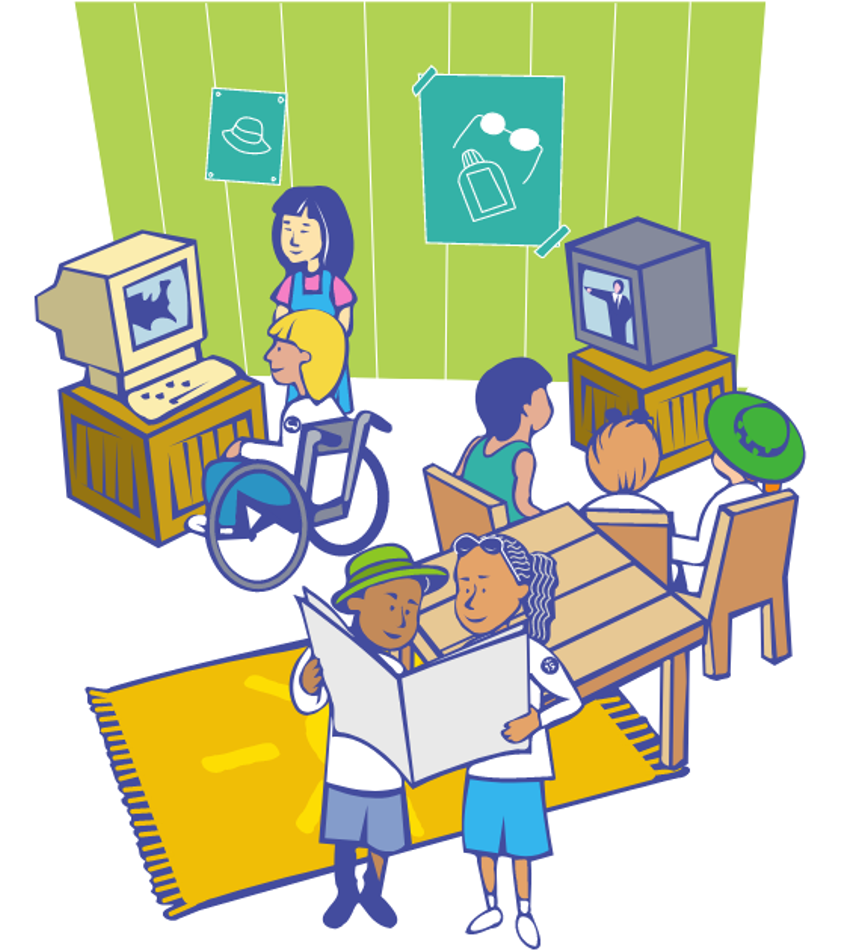Participation
Understanding and being understood – the importance of inclusive communications and child-friendly materials
November 16, 2022 by Caroline McMenemy No Comments | Category Children & young people, Guest blog
Information is power.
Communication is powerful.
Everyone has the right to receive information and express their views, including children and young people.
Right to information
Access to information is essential for any individual to engage with and actively participate in society.
However information alone is not enough. For information to fulfil its purpose and be truly meaningful it has to be presented in a format that the user understands.
In order to fully experience their rights, particularly Articles 2, 12, 13, 17 and 42, children and young people should have access to information and experience interactions with others that are designed to meet their communication needs and preferences and take an inclusive approach.
Inclusive communication approaches apply to all types of communication: verbal, written, face-to-face, digital or online. Use of safe, accessible and respectful spaces where children and young people feel comfortable to share their views and engage with others is an essential part supporting their meaningful participation and the realisation of their wider rights.
The Lundy Model of Child Participation provides useful insight into how adults can create environments and interactions that facilitate children’s meaningful engagement. The elements of Space and Voice within the model may be of particular interest to those considering how an inclusive communication approach can be applied.

Taken from: Lundy, L. (2007) ‘‘Voice’ is not enough: conceptualising Article 12 of the United Nations Convention on the Rights of the Child’, British Educational Research Journal, 33:6, Pp. 927-942.
Creating child-friendly materials
Child-friendly materials are usually much shorter than the original papers and only cover the main points rather than providing lots of detailed information. By providing key pieces of information, child-friendly versions can support children’s understanding of what the paper is all about and signpost readers to other sources if they wish to explore the issue further.
Access the European Commission’s guide on creating child-friendly versions of written documents.
Within rights-respecting practice the creation of child-friendly materials is best achieved through co-production: exploring factors such as format, style, content, language and tone with children and young people provides valuable insight to ensure key messages appeal to and reach their intended audience.
Follow the links below to view some good examples of child-friendly materials:
- Children and Young People’s Commissioner Scotland – Children and Young People’s Annual Report 2020-21
- Together Scotland – State of Children’s Rights in Scotland Report – Child-friendly version 2022
- UNICEF – United Nation Convention on the Rights of the Child – Child-friendly version
Our previous blog post highlighted how the Scottish Government applied a co-production approach to work collaboratively with children and young people to develop the Children’s Rights and the UNCRC in Scotland: An exploration of rights in our communities animation.
This animation is one of the many ways in which the Scottish Government is striving to inform children and young people about their rights, as described in the Open Government’s Participation Framework.
The Open Government’s Participation Framework sets out the spectrum of participation which includes ‘inform’ as one band of the spectrum. Activities to inform should aim:
“…to provide the public and other stakeholder groups with information about government’s activities, policies, plans and performance in clear, accessible and relevant ways. This could also include providing information about how people can participate in shaping or monitoring these aspects of government.”
Supporting participation through information
An engagement approach primarily focussed on information provision can be most appropriate on occasions where there is little or no room for negotiation (e.g. legal obligations) or a decision has already been made (e.g. clear manifesto commitments).
Providing information about governments’ activities, policies, plans and performance however is also the foundation that supports all other mechanisms for engaging the public and stakeholder groups in the processes of government.
Informing activities that assist participation at different levels include:
- letting the public know that work is going on around a particular issue
- communicating opportunities for participation in policy development
- building public capacity to understand the details of a particular policy consideration
- publishing information/data related to the issue so that interested stakeholders can choose to engage with the material
- announcing a government decision, following wider engagement
Key principles for effective information provision include:
- that information must be provided in accessible and relevant ways
- that information must be easy to find
- that relevant information should not be withheld unless there is a strong and justifiable case for doing so
Watch this space!
We’ll be publishing a new blog here every day this week so keep an eye on @ScotGovEngage for blog announcements or check back here.
Tags: children and young people, Communications, guest blog, open government, participation, scottish government



Leave a comment